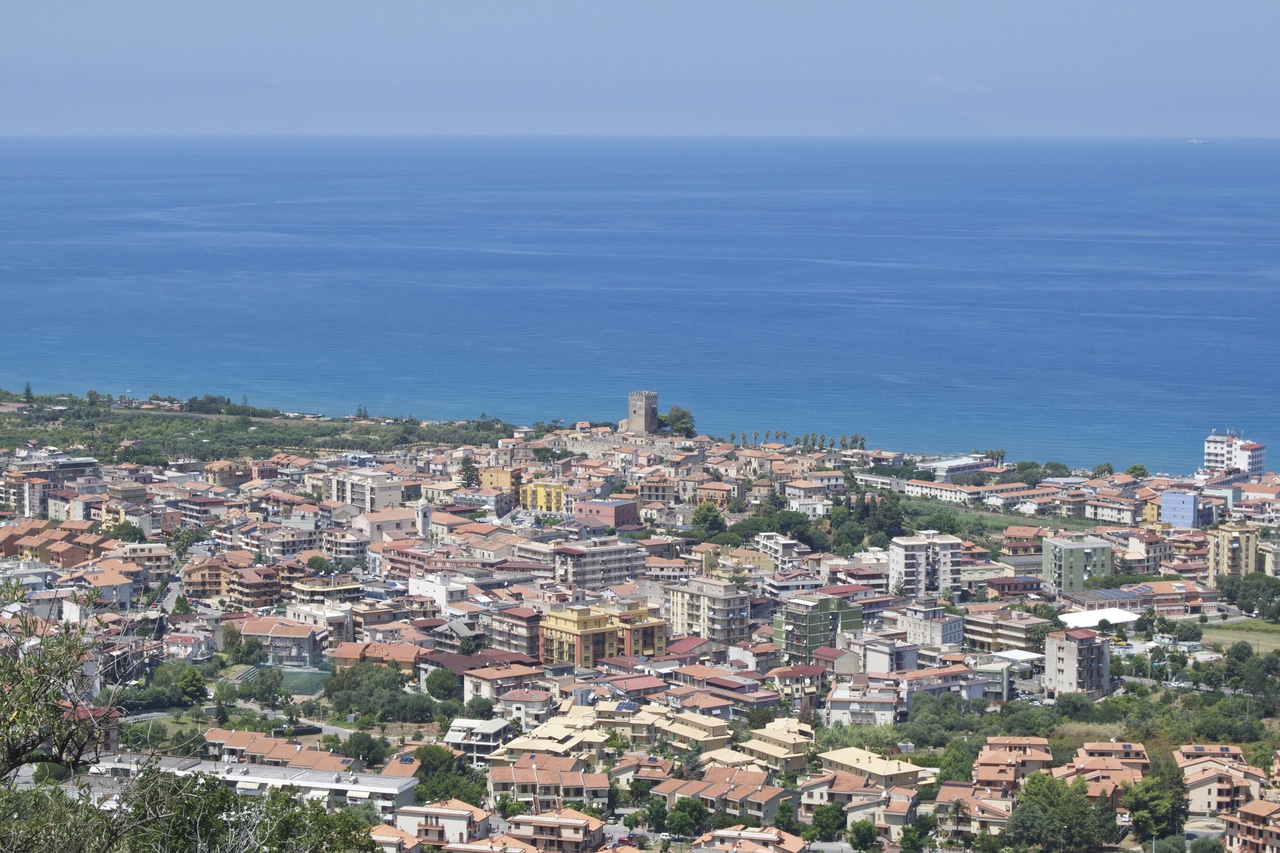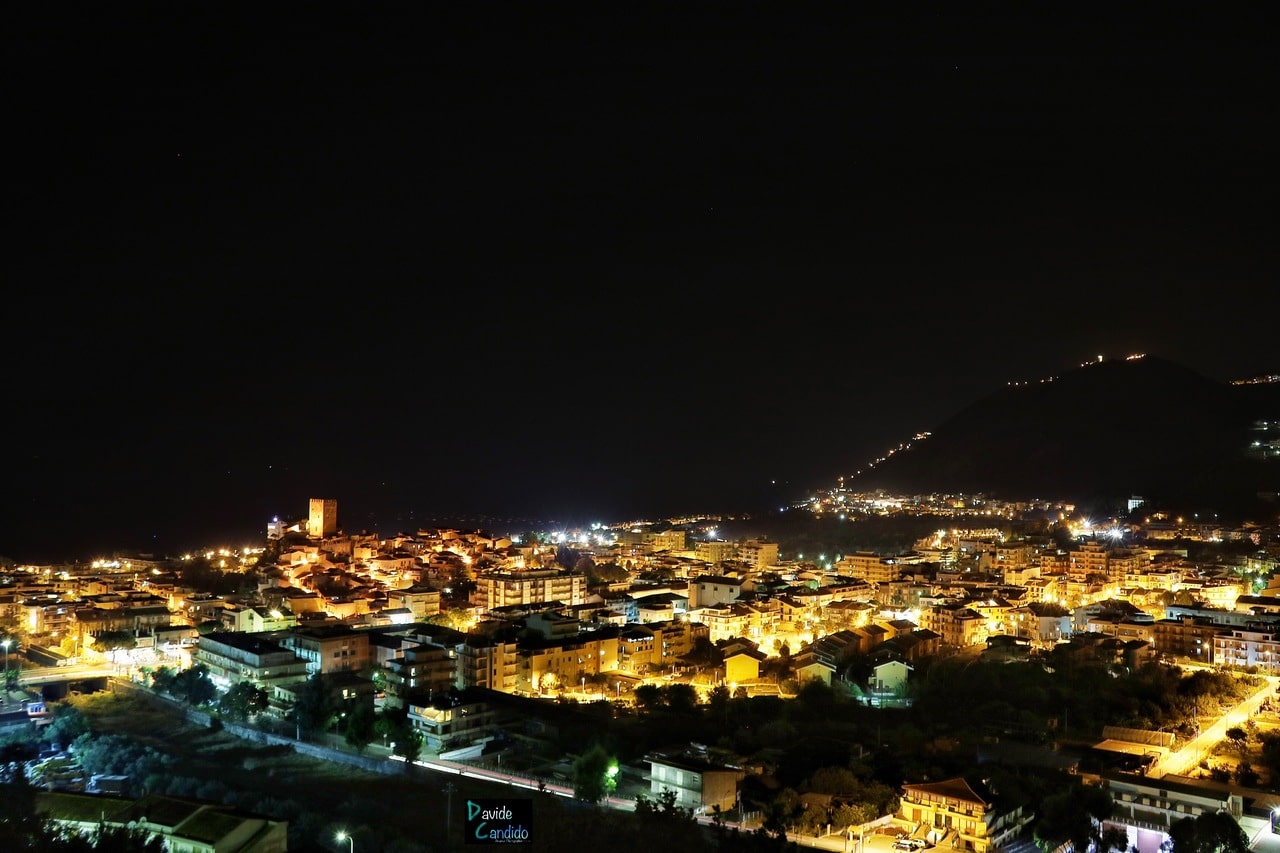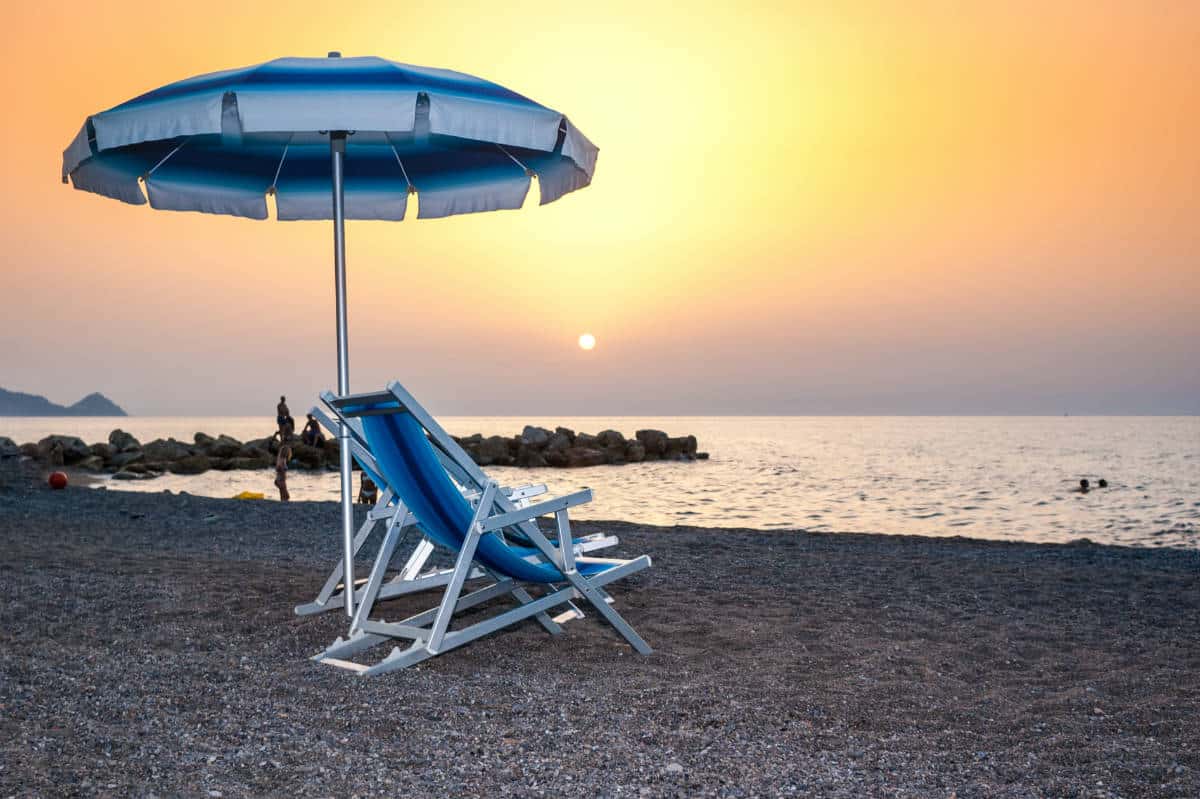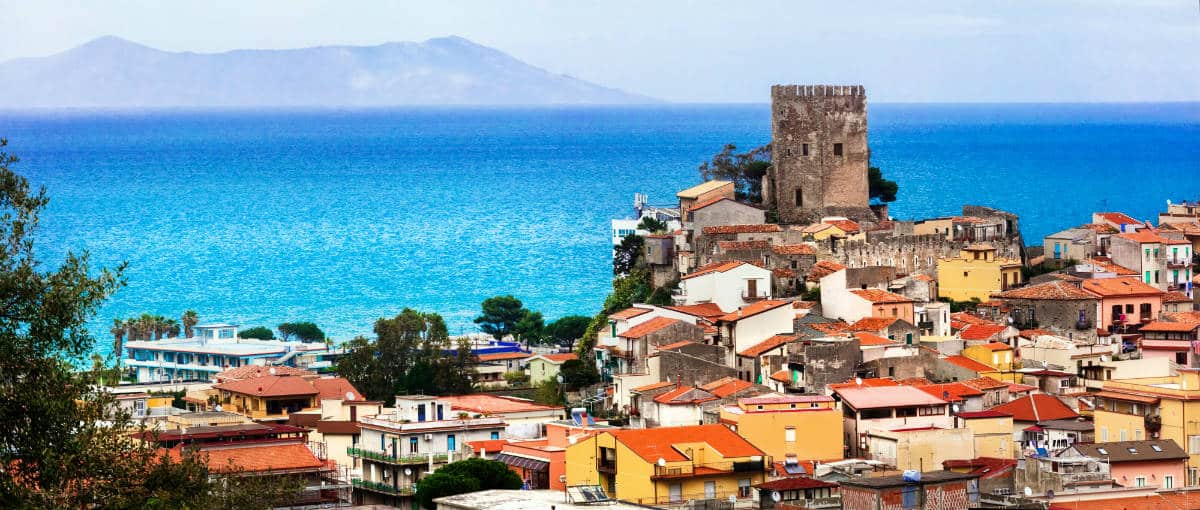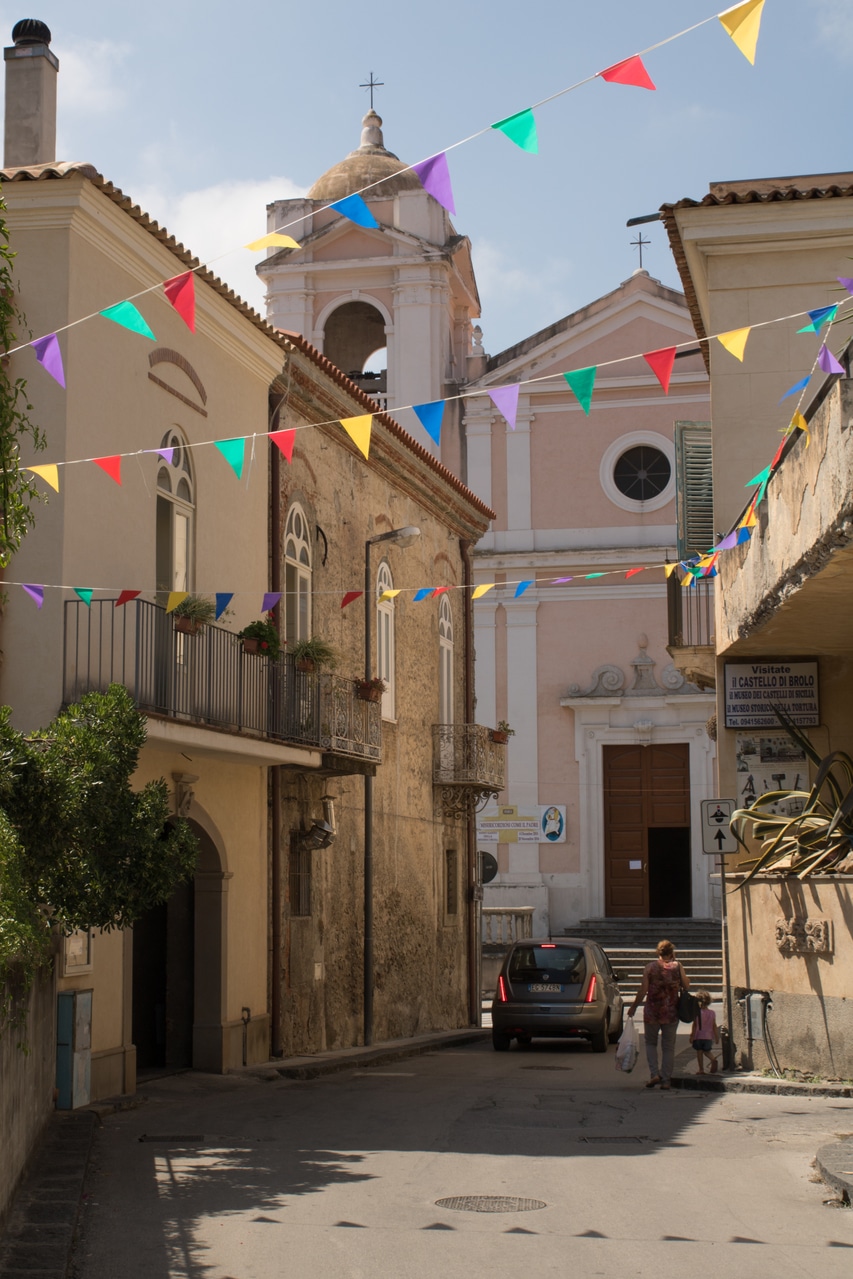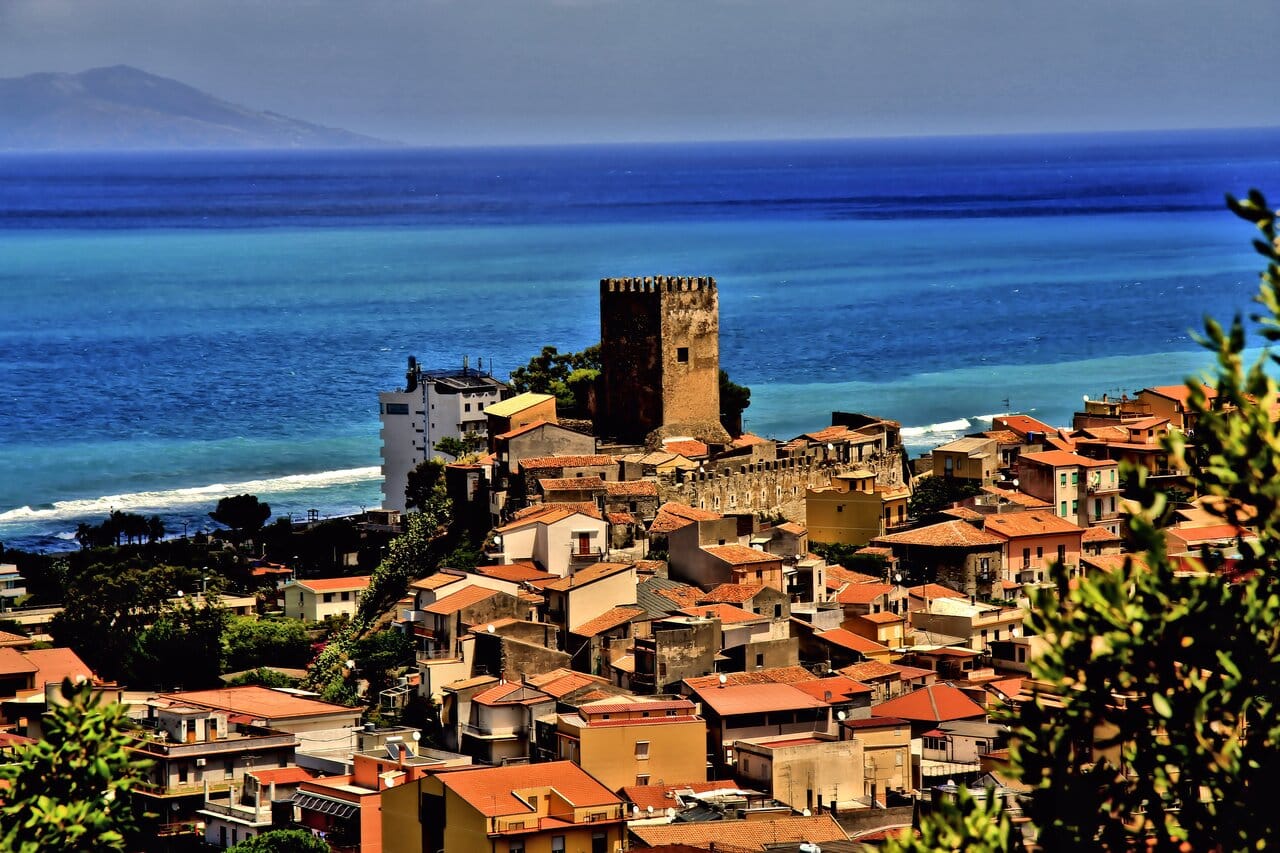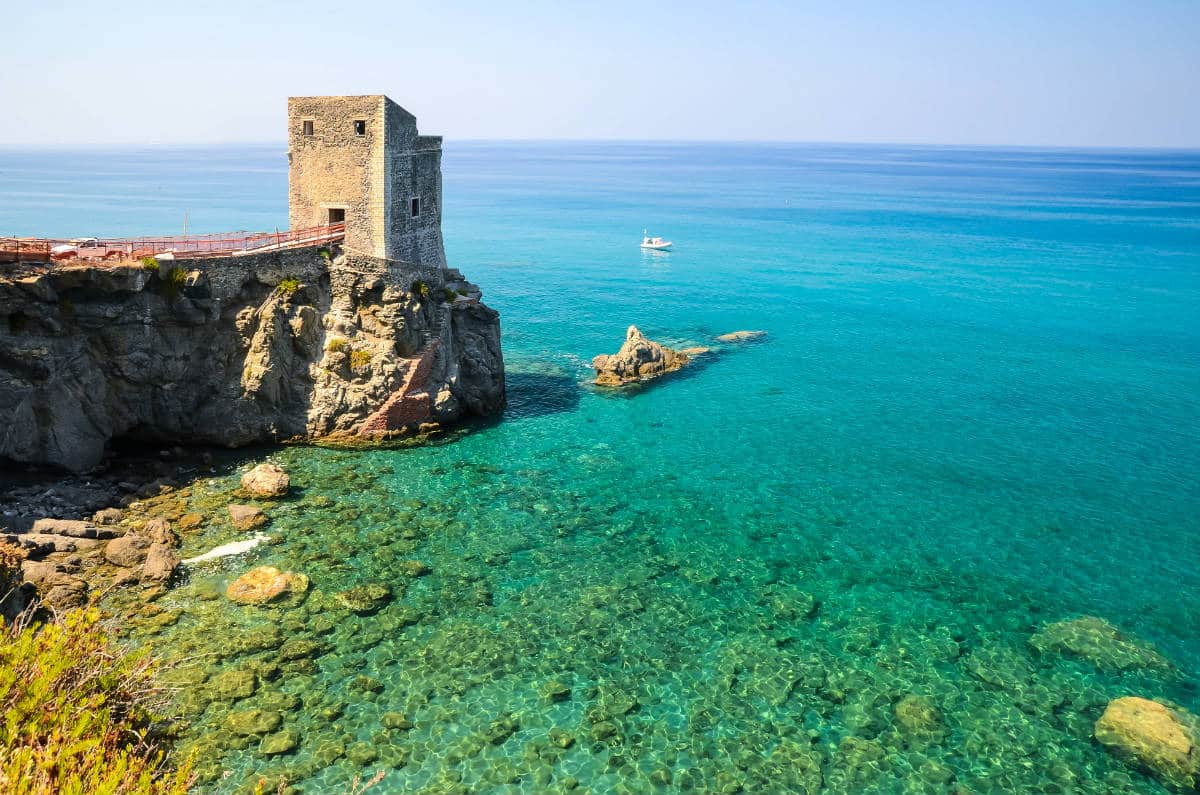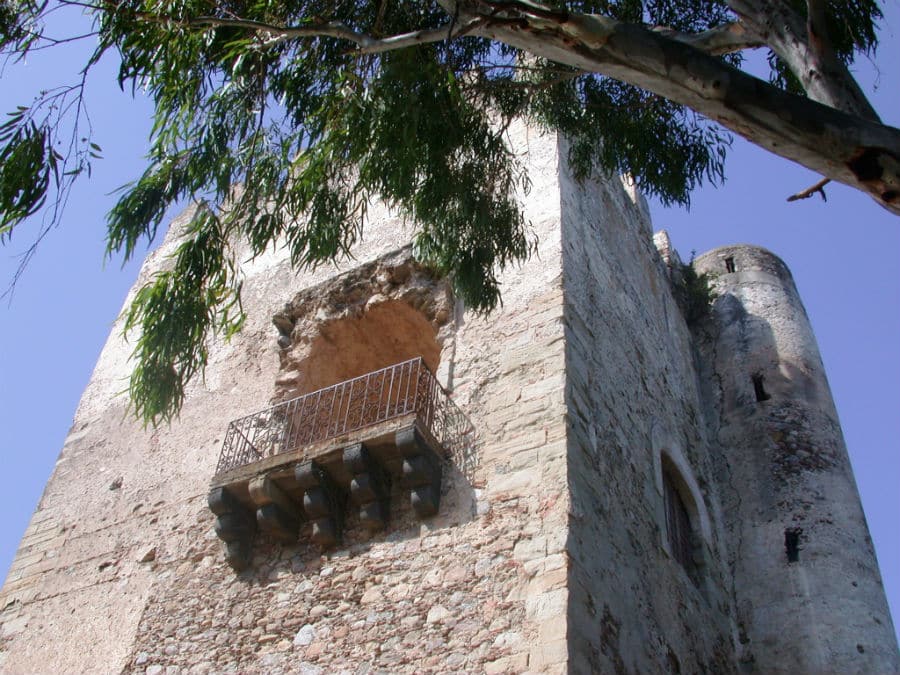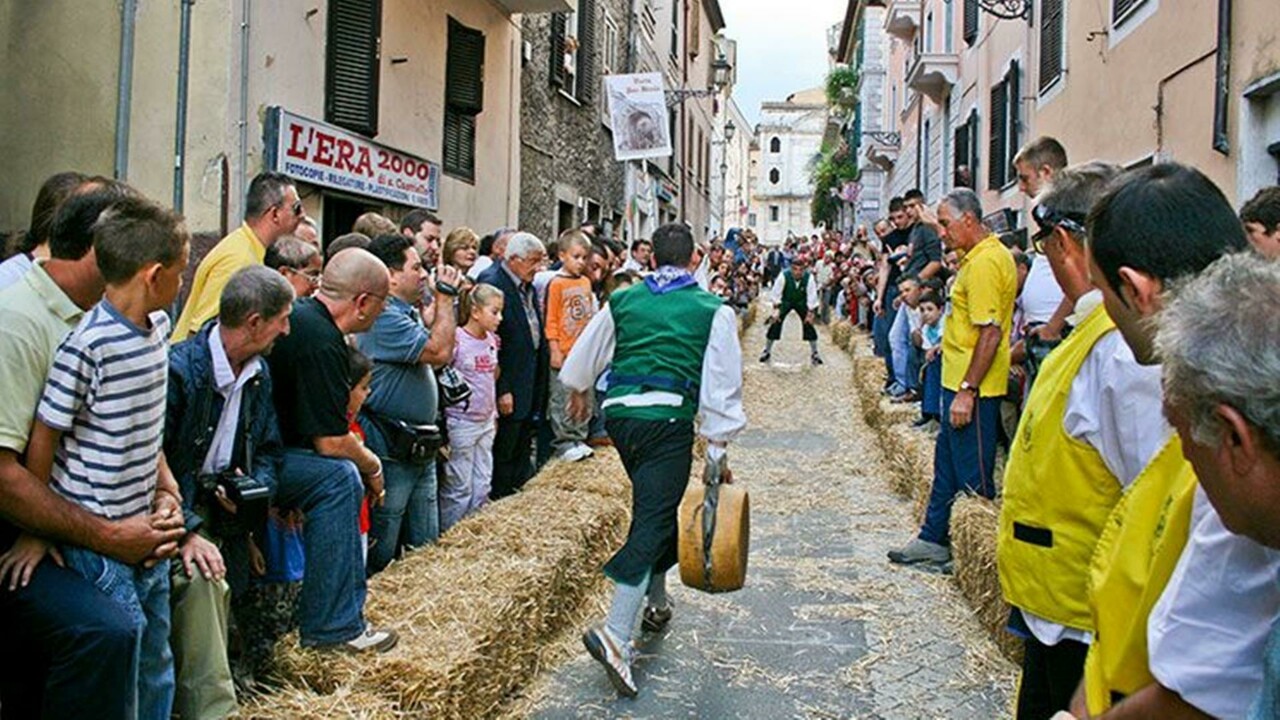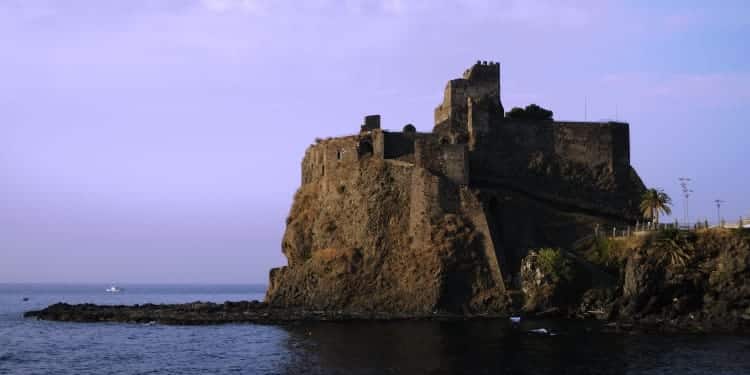Il Borgo di Brolo (Brolu in Sicilian) is situated along the Tyrrhenian coast, in Sicily, and surrounded by the mountain chain of Nebrodi. The territory is characterized by surfaces intended for agriculture, mainly citrus groves, the most widespread species is the lemon (Citrus limon), it the predominant cultivation is the Femminello comune from which it originated, due to the characteristics of the local microclimate, the cultivar of Femminello di Brolo, called 'u Cucuzzaru. Occasionally between citrus fruits are inserted olive trees, that apparently serve to meet the need of oil of individual owners, but that in the past joined to the main utility of trees windbreak, the boundary of the property. In the vicinity of the scattered houses we find subsidiaries citrus, various species of fruit trees and some plots of land intended for orchards, which meet the needs of individual families.
The history of the old original medieval village is born and develops around the Castle, built almost to peak on the sea, the manor dominated a vast stretch of the tyrrhenian coast, protecting the underlying beaches from pirate raids. This building used to control the coast, together with the fishermen village was known in the Norman period, with the term Voab, toponym bequeathed as a legacy from the previous Arab domination and whose meaning is Rocca marina. The port of Brolo was the only present in this stretch of coastline, signaled by the geographer Edrisi in 1154 with the name of Marsa Daliah (the port of the screw) almost certainly was protected by an initial building used to the sighting of the Saracen ships. The expansion of Brolo takes place gradually; in the XVII century in short plain, below the castle, develops the inhabited center with the Mother Church was built by Ignazio Vincenzo Abate, Marquis of Longarino and Lord of Brolo, in 1764, and finally the building, along the strada regia, some nineteenth century palazzetti define the urban profile of the country.


